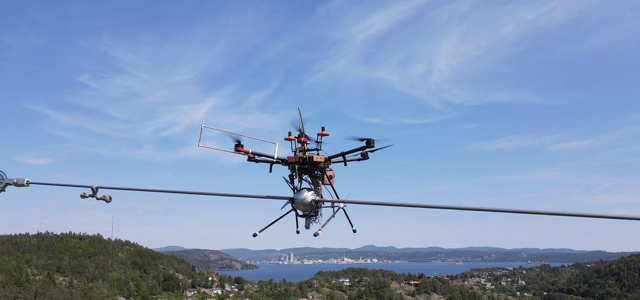As the need for electricity grows and rules change, U.S. utilities are looking for new ways to improve their power grids.
Heimdall Power’s Plan for FERC 881
Heimdall Power came up with a plan on October 10, 2024, to help U.S. utilities follow the Federal Energy Regulatory Commission (FERC) 881 rule. They will use drones to put lots of Neuron sensors, called “Magic Balls,” on high-voltage lines, giving real-time data that goes beyond what FERC wants. This means utilities can be ready for new rules in just two weeks before the July 2025 deadline.
“The upcoming FERC 881 order is merely the first domino to fall in a slew of upcoming enhancements that utilities will need to make to keep up with the increasing demand for electricity,” said Jørgen Festervoll, CEO of Heimdall Power.
Advantages of Neuron Sensors
The Neuron sensors collect important data like temperature, weather, and power line angles, helping utilities know how much power they can send safely. These sensors also let utilities prepare for what’s next by boosting transmission capacity and skipping long, expensive projects. Heimdall Power says their tech can unlock up to 40% more capacity from existing grids.
“The good news is that this regulation is prompting companies to consider how they can use technology to unlock transmission capacity they’ve never been able to access,” Festervoll added.
Drones Transform Grid Upgrades
Heimdall Power uses drones to place sensors, a big change from the old way of using six linemen. Now, a two-person team can attach each sensor in under 15 seconds, making the process much faster. With 20 drone teams, they can install 800 sensors each week, so if a utility needs 1,600 or fewer, they can finish in two weeks and meet FERC 881 standards.
People often wonder if technology will make things easier or harder.
Preparing for Dynamic Line Ratings
Beyond just following rules, Heimdall Power’s tech helps utilities get ready for future energy needs. Dynamic Line Ratings give real-time info, letting utilities handle stress and gain more capacity. While FERC 881 only asks for hourly or weekly checks, real-time data will matter more as energy needs rise.
Heimdall Power showed success already, being invited to the White House after helping Great River Energy raise its transmission by 42.8%. This large project across Minnesota, Wisconsin, and North Dakota is the biggest grid upgrade in the U.S. so far.
With their smart way of upgrading grids, Heimdall Power helps U.S. utilities follow FERC 881 and look ahead to meet future energy demands. Using drones for fast sensor installs, they unlock big capacity in current grids, allowing for better efficiency and Dynamic Line Ratings.
As Festervoll emphasized, “Those that view this moment as an opportunity to lay the foundation for dynamic line ratings can increase their transmission capacity by a significant margin–and avoid the years-long infrastructure projects that once seemed like the only option.”
